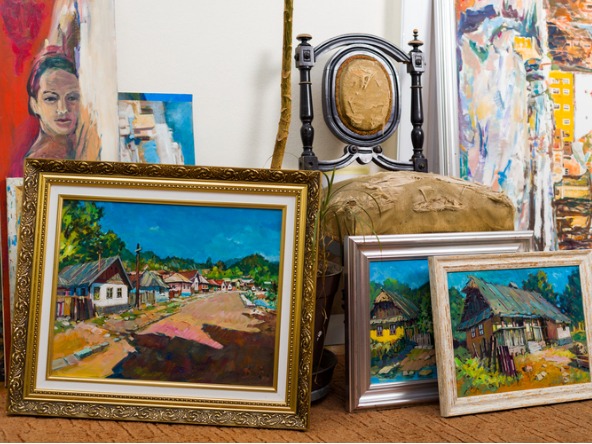The mystery of creativity: Advertising and art

We think of the creative process as the result of some mysterious, innate talent. The very word ‘creativity’ conjures up the image of painters like Pablo Picasso and Leonardo Da Vinci, who we suppose were blessed with the skill to generate their masterpieces. We imagine Andy Warhol and Paul Cezanne – driven to instil a mystical aura into their art.
The truth is creativity is rarely the materialisation of some divinely inspired gift. Nor is it applied to produce something elusive and intangible. It’s much more mundane and practical than that. Understanding the difference between the perception of how creativity evolves and the way it actually develops can help us get more immediate access to it and better results from it.
Creativity requires action
The ‘Eureka moment’ makes it easy to think that creative ideas suddenly appear from nowhere, and if you’re lucky a spark of genius will come to you. But the truth is that creativity can’t rely on such passivity. Instead, it thrives on activity.
Da Vinci’s creative talent was a direct result of his relentless pursuit of knowledge. His 7,000-page notebook is a testament to his insatiable appetite to grasp the natural world, and Da Vinci was a prime example of his own teaching: “People of accomplishment rarely sat back and let things happen to them.”
Why is action so important for creativity? Simply put, creative ideas occur when the brain makes connections, combining existing pieces of information in a new way. The more information available, the more opportunity for creative ideas to occur. This is why the most creative people spend lots of time reading, exploring and observing. Even if these activities don’t provide anything that’s immediately useful, they build a repository of material for future creative ideas to spring from.
This desire for discovery also helped to shape the world’s most valuable business. In 1972, Steve Jobs’ curiosity compelled him to take a calligraphy class at college, despite knowing it wouldn’t count towards his final degree or thinking it would have any practical application. But his knowledge helped create the Apple Mac’s slick, user-friendly typography – an integral part of its mass-market appeal.
Creativity borrows
Creativity is synonymous with originality: producing brand new work unlike anything that came before it. But, in reality the creative process doesn’t reject existing ideas – it reshapes them.
Cubism is considered one of the most innovative art movements of the 20th century. Its focus on geometric shapes and two-dimensional perspectives redefined how paintings could depict reality. But it was a clear reformulation of a movement that came decades before: post-impressionism.
For instance, the deconstruction of shapes into precise angles and distinct areas can be seen in the work of Paul Cezanne as early as 1885. Picasso openly acknowledged the influence of Cezanne on his work, describing him as ‘my one and only master’.
After all, some of the most successful adverts are based on existing concepts. Dove’s Real Beauty campaign was praised for shattering beauty stereotypes in advertising, and contributed to a doubling in sales. Yet its core insight is remarkably similar to the one found in a Body Shop campaign that ran seven years earlier: ‘There are three billion women who don’t look like supermodels and only eight who do.’ Deliberate or not, the brilliance of Real Beauty was combining this insight with an unconventional execution – showing real people rather than mannequins.
Rather than obsessing over a brand’s ‘unique selling proposition’ or an ad’s ‘groundbreaking big idea’, marketers can succeed by putting a fresh twist on a familiar formula.
Creativity is commercial
It’s tempting to think that creativity exists in a world removed from money, where it’s valued purely for its mysterious artistic appeal, not the income it earns. But the most successful artists have always considered creativity’s ability to pull in a profit.
Andy Warhol was famous for his obsession with money, once claiming that “good business is the best art.” Much of his celebrated work was centred on consumer products like Coca Cola and Campbell’s soup. In other artworks, he made his fixation with money even clearer, such as laying out 192 $1 bills as a stylised dollar sign.
In the same way, creative advertising works to make brands more profitable. Yes, ads can be designed beautifully; they can entertain and tell a compelling story. But they only succeed by encouraging consumers to buy the brand, in the short and long term.
Decades of research from the IPA show awarded campaigns are more commercially successful than non-awarded campaigns: they are more likely to get shared and talked about in public, and more likely to drive hard business outcomes like penetration and market share growth.
At a time when marketing budgets are under intense scrutiny, it’s important to remember that advertising is an investment designed to provide a return. This is what creativity helps to do, and how it should be judged. Marketers should embrace the fact that creativity is built on ordinary habits, yet leads to extraordinary results – that is what makes creativity truly special.
Sam Salama is research manager at Basis Research

We hope you enjoyed this article.
Research Live is published by MRS.
The Market Research Society (MRS) exists to promote and protect the research sector, showcasing how research delivers impact for businesses and government.
Members of MRS enjoy many benefits including tailoured policy guidance, discounts on training and conferences, and access to member-only content.
For example, there's an archive of winning case studies from over a decade of MRS Awards.
Find out more about the benefits of joining MRS here.














0 Comments